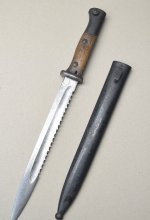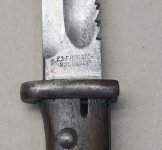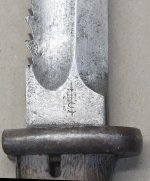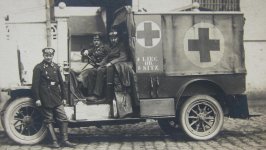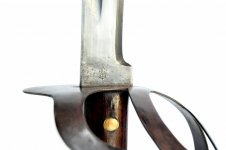Very interesting thread.
The Horster "Sword H" (I call it "
HHS") has plagued me as well in researching the Horster dress kS98 sawbacks. Some points -
- Horster was very deliberate in how and where they stamped their bayonets. For example, Horster received four contracts to manufacture kS98 sawbacks for the military in 1913 & 1914 and each contract has a very specific placement and style of Horster marking. In the same way, all war-time Horster private purchase (
pp) bayonets (S84/98 and kS98) have the italic two line
E.&F. HÖRSTER stamp on the
reverse ricasso. So, there is little doubt that the bayonet in question was intended for private purchase and not an official contract. As found by others, none of the Horster S84/98nAS examples I have had myself have had any inspection marks or cyphers. On that point, just to note that the presence of an inspection mark does not mean that an Imperial bayonet was official military issue; many private purchase bayonets have a single inspection mark on their bolts, press studs or even crossguards. For example, most Horster
pp kS98 will have a single C inspection mark somewhere.
- The HHS marking has been considered to be a post-war stamp. However, like this S84/98, some examples of one
pp kS98 model are also found with the
E.&F. HÖRSTER mark and/or
HHS stamp. I have always assumed that these represented Imperial-era bayonets that were sold after the war and given the
HHS at the time. The
HHS stamp can often be placed rather awkwardly on the ricasso as though an after thought. However, again, just to note that not all immediate post-war Horster have the
HHS stamp. Overall, the use of the
HHS stamp seems somewhat haphazard on post-war bayonets.
- The scabbard shown here is the standard private purchase Horster scabbard. It is very distinctive and only found on Imperial and immediate post-war Horster
pp bayonets. It has a rather small frog stud and no throat insert with two small rivets on front and back holding the retaining springs.
Ian Jackson

www.imperial-german-bayonets.net

